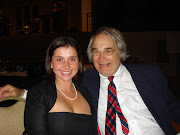Tuesday, November 3, 2009
DIA 10 min close November 3, 2009
The chart immediately above is a Center Post Indicator. This function shows the center post for this T is 14:20 yesterday on November 2, 2009. This T has just expired. The middle chart above is the T that just expired. The chart at the top is a trend indicator that has just moved into the negative as the T has expired.
At 11:11 this morning I initiated a short of BGU at 47.81 and I went long of BGZ at 22.03.
I am now going out to vote as I hope all of you will do today.
At 11:11 this morning I initiated a short of BGU at 47.81 and I went long of BGZ at 22.03.
I am now going out to vote as I hope all of you will do today.
Subscribe to:
Post Comments (Atom)







6 comments:
Just curious, DC, why the Dow?
Of the three major ETF's, DIA, SPY and QQQQ, the Diamonds have the highest sigma or standard deviation, i.e. it is the most volatile of the three. I assumed that I would get the biggest percentage move by trading the DIA. Since I was trading these ETF's before they introduced double alpha and triple alpha ETF's, all my historical intra-day data is the DIA. Since the arbitrage in the S&P futures requires a longer holding period than arbitraging the DIA, there is a much larger time premium in the S&P future over the DIA and SPY where they trade within a few pennies of the cash. By trading the DIA, I do not have to keep calculating a fair value to determine what kind of a premium I am paying. By going long and short the triple alpha ETF's, I hope to avoid any adverse effect of the inherent premiums of these ETF's.
Thanks for the explanation.
And, yes, I noticed the BGU/BGZ move. Clever.
I did a big study--before i was blogging-- on the "inherent premiums" of these leveraged funds.
Am I correct?...by shorting BGU, the errosive effect of volatility is in your favor, however, that is in exchange for the "unlimited liability" of being short; you are hedging that by also being long.
George,
I think that it is virtually imposable to determine the fair value of these multiple alpha ETF's in order to measure any premium, because the Triple Alpha and Double Alpha funds consist of 100% derivatives, a smaller percentage is futures contracts of the S&P and Dow futures for daily balancing, the majority of the portfolios are derivative contracts that are priced on a mark to model basis and nobody really know the real value and the derivative is most likely illiquid. The fund posts some sort of daily value for the purpose of arbitrage because that is how the fund manager makes his money. We have to be very careful that we do not have a position in these ETF's when they blow up. They are strictly trading vehicles and we only hope that the bookie pays off when we win.
George,
By the way, I lost over $2,000 on that last BGU/BGZ trade. The position I took was double jeopardy to the downside. My short went up and my long went down.
Shame about the loss, DC. I don't see why you consider it a double jeopardy if it was essentially one position just executed w\ two instruments.
Post a Comment